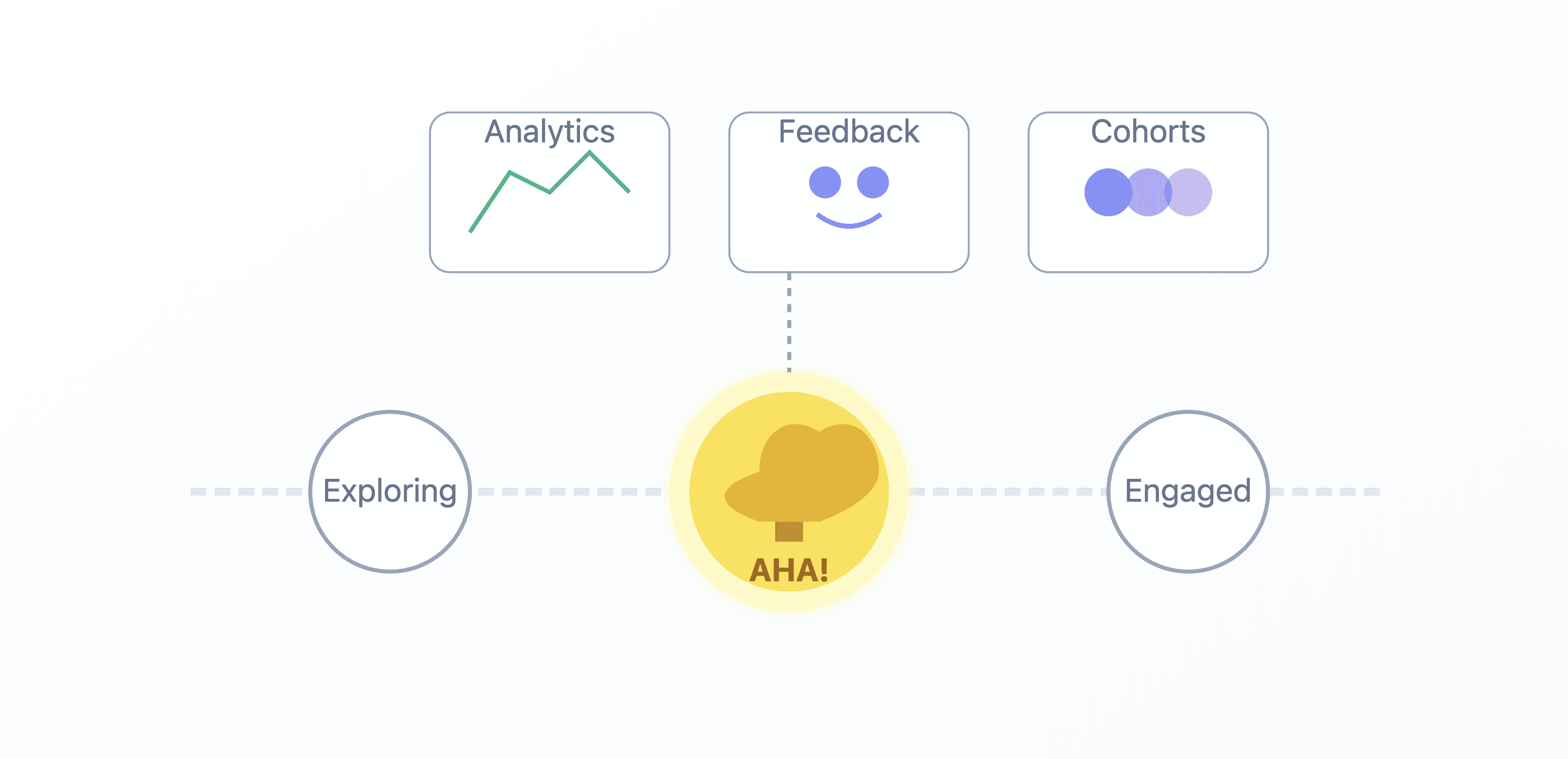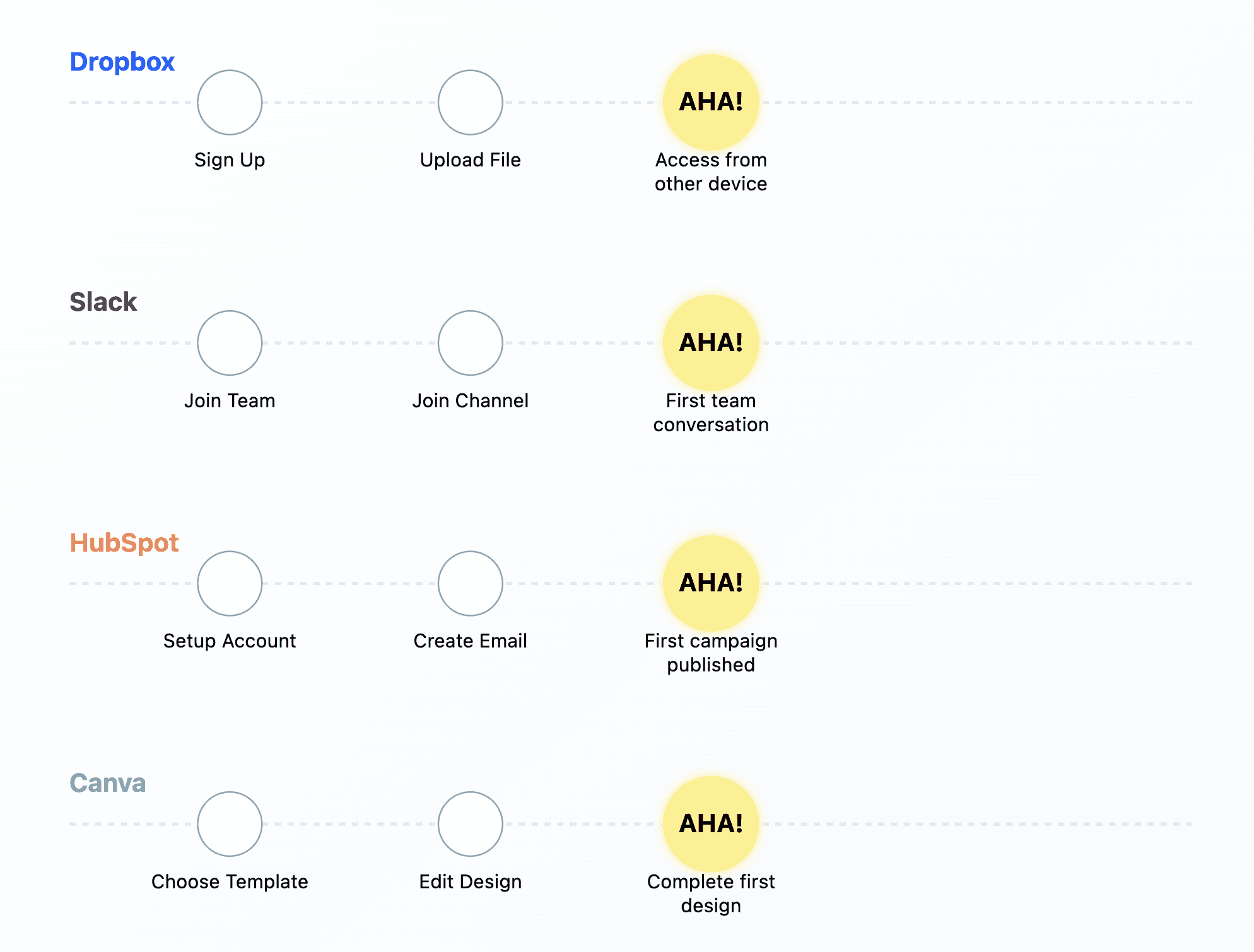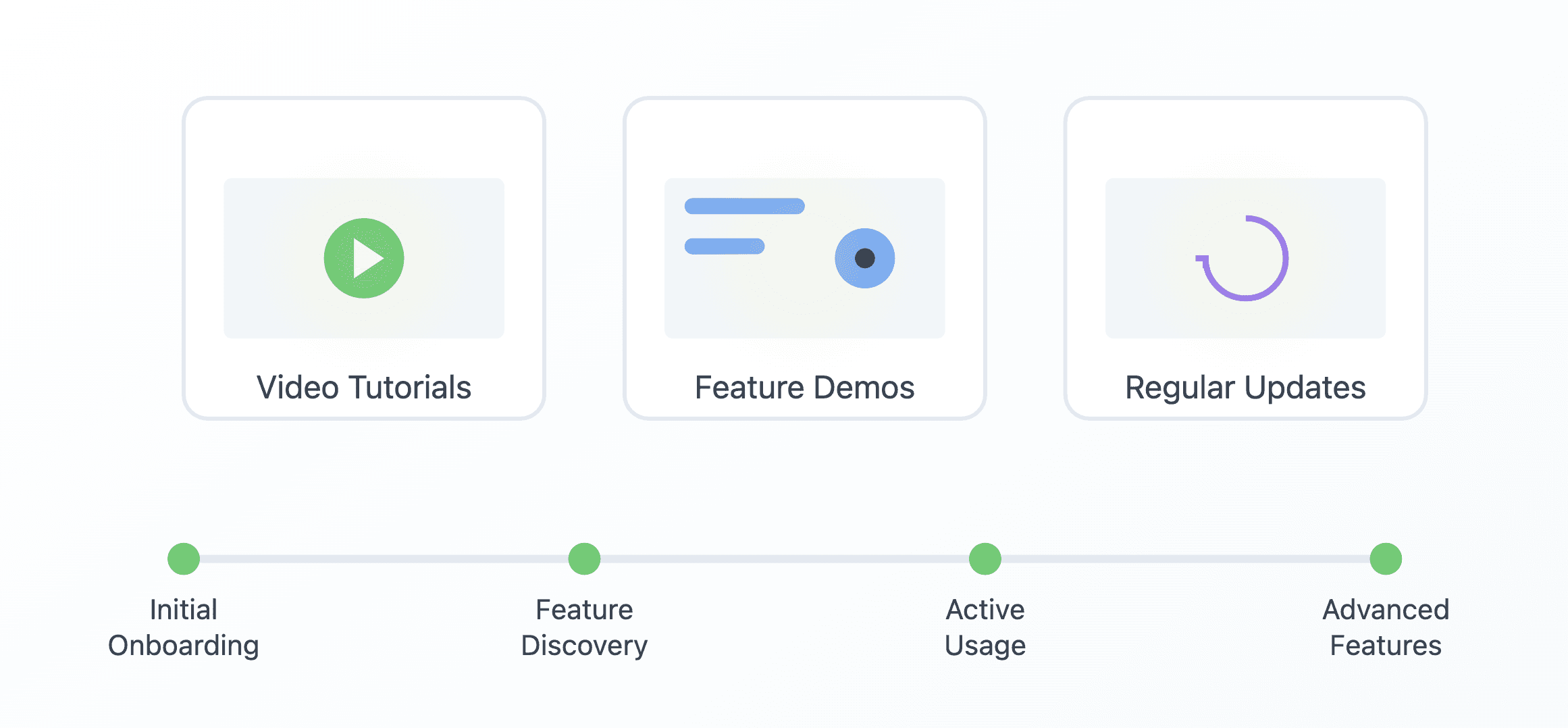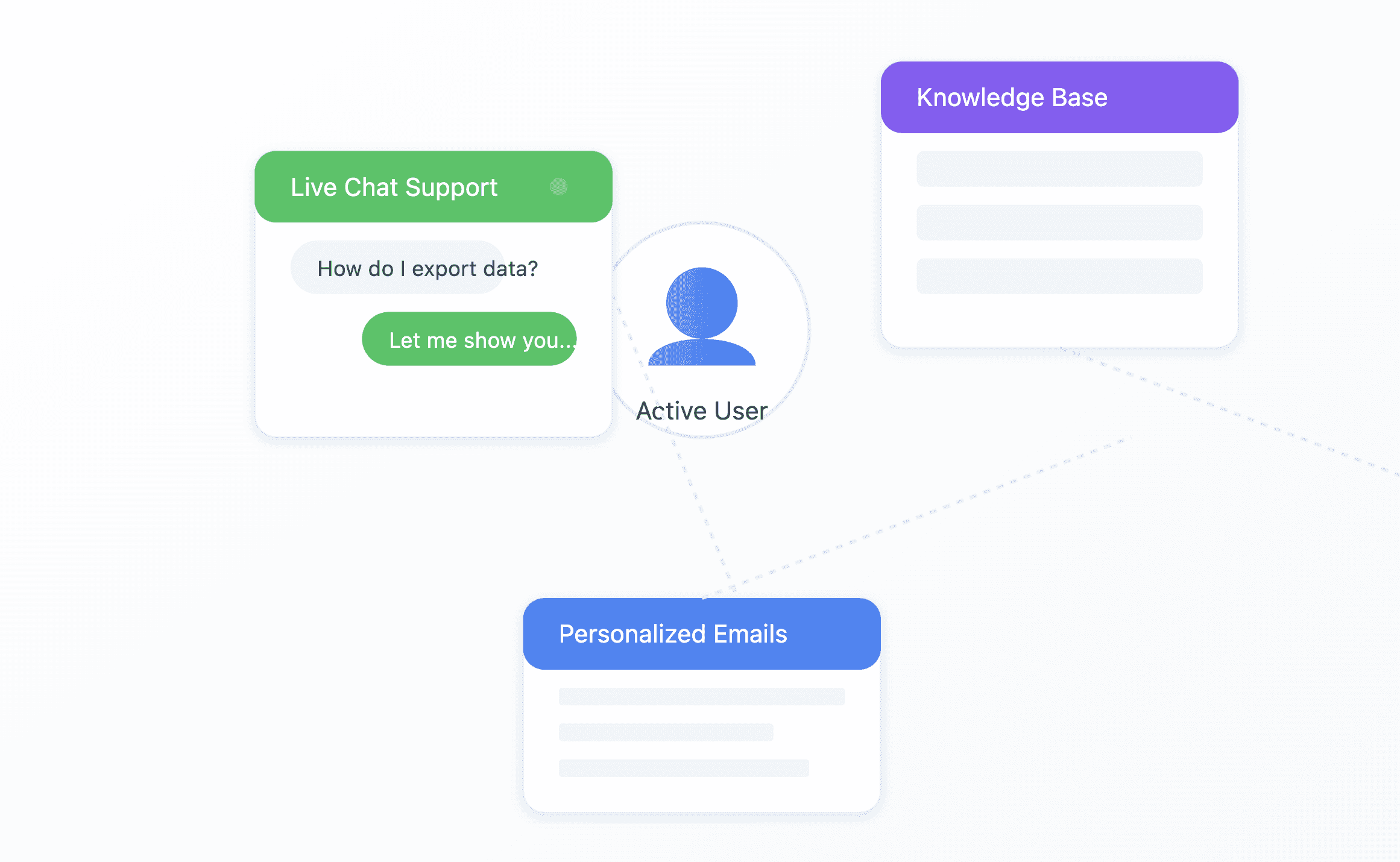
How to Optimize Activation Flows for Your SaaS Product

by
Wiktoria Slowikowska
Nov 6, 2024
Identify and convert your most valuable users
Sign Up
Creating an effective activation flow is a critical aspect of any successful SaaS product. It’s the bridge between acquiring a new user and turning them into an active, engaged customer. But how do you ensure that your activation flow is as smooth and efficient as possible?
In this article, we’ll explore the key strategies and best practices for optimizing activation flows, ensuring that your users not only sign up but also get the most out of your product from the start.

Understanding Activation Flows
Before we dive into optimization techniques, let's clarify what we mean by “activation flow.” Activation flows refer to the series of steps users take after signing up for your service, leading them to the “aha” moment where they truly understand the value of your product. This journey is crucial because if users don’t experience that moment early on, they may abandon your product before realizing its full potential.
The Importance of Activation
Why should you focus on optimizing activation flows? A seamless activation process can significantly impact user retention and engagement rates. According to studies, a well-optimized activation flow can boost user retention by up to 30%. When users quickly see the benefits of your product, they are more likely to continue using it, ultimately increasing their lifetime value.
A successful activation flow doesn’t just lead to immediate engagement; it lays the groundwork for long-term relationships with your users. It sets the tone for their experience with your product, influencing their perceptions and behaviors from the very beginning. Therefore, investing time and resources into optimizing activation flows can yield significant returns in terms of customer loyalty and satisfaction.
Steps to Optimize Your Activation Flows
1. Identify Your Aha Moment

The first step in optimizing your activation flow is to identify what your “aha” moment is for users. This moment is typically when users realize how your product solves their problem or adds value to their lives. It's essential to pinpoint this moment because it will guide the entire activation flow and inform the features and benefits you highlight.
How to Find Your Aha Moment:
Analyze User Behavior: Leverage analytics tools to track user behavior and interactions within your product. Look for patterns that indicate when users experience significant engagement or achieve specific milestones.
Collect User Feedback: Conduct surveys or interviews with existing users to understand when they felt they truly understood the value of your product. Ask open-ended questions to gather qualitative insights that can illuminate the user experience.
Utilize Cohort Analysis: Segment users based on their activation experiences to identify trends in successful onboarding. Compare groups of users who reached the “aha” moment with those who did not, and analyze the differences in their behavior.
Once you’ve identified your “aha” moment, use it as a focal point in your activation flow design. Make sure that the steps leading up to this moment are intuitive, engaging, and clearly demonstrate the value of your product.
Examples of Aha Moments in SaaS Companies
Understanding what an “aha” moment looks like can vary greatly between different SaaS products. Here are a few examples from well-known SaaS companies:
Dropbox: For Dropbox, the “aha” moment occurs when users successfully upload their first file and can access it from multiple devices. This moment showcases the core functionality of the service—file synchronization and accessibility—making users realize the convenience and utility of cloud storage.
Slack: In Slack, the moment comes when a user receives their first direct message or participates in their first channel conversation. This experience highlights the platform’s collaboration features and demonstrates how Slack can enhance team communication, ultimately encouraging ongoing usage.
HubSpot: HubSpot users often experience their “aha” moment when they first create and publish a marketing email or landing page. This realization shows them how HubSpot’s tools can directly impact their marketing efforts, providing them with immediate value and incentivizing further exploration of the platform.
Canva: Canva's “aha” moment is reached when users create their first design using its drag-and-drop tools. This experience not only illustrates the platform's ease of use but also empowers users to produce professional-looking graphics quickly, encouraging them to continue using the platform for various design needs.

By analyzing these examples, you can see that an “aha” moment often aligns with a specific feature that showcases the product’s core value proposition. Identifying and leveraging this moment in your activation flow can significantly enhance user engagement.
2. Simplify the Signup Process

A complicated signup process can deter potential users before they even start exploring your product. To optimize your activation flow, ensure that the signup process is as simple as possible. The easier you make it for users to sign up, the more likely they are to complete the process and begin engaging with your product.
Tips for a Smooth Signup Experience:
Minimize Required Fields: Only ask for essential information during signup. The fewer fields users have to fill out, the more likely they are to complete the process. Consider using a single sign-on (SSO) option to streamline this step.
Enable Social Sign-Ins: Allow users to sign up using their existing social media accounts. This can significantly reduce friction and make the process quicker. Many users appreciate the convenience of skipping lengthy forms.
Use Progress Indicators: If your signup requires multiple steps, use progress indicators to show users how far along they are. This helps manage expectations and encourages completion, as users can see the finish line ahead.
Remember, the goal is to make the signup process as frictionless as possible. Every additional step or field can lead to user drop-off, so keep it concise and user-friendly.
3. Provide a Guided Onboarding Experience
Once users have signed up, a guided onboarding experience can help them navigate your product effectively. Onboarding should introduce users to key features and demonstrate how to use them to achieve their goals. This is where you can showcase the unique value proposition of your product.
Creating an Effective Onboarding Experience:
Utilize Tooltips and Walkthroughs: Use interactive tooltips or guided walkthroughs to highlight important features as users navigate the product for the first time. These tools provide real-time assistance, reducing confusion and frustration.
Segment Onboarding Content: Customize onboarding content based on user personas or goals. Different users might require different onboarding paths depending on their needs. For example, a marketing manager may need to focus on analytics features, while a developer might prioritize API integration.
Incorporate Checklists: A checklist can provide users with a sense of accomplishment as they complete onboarding tasks, reinforcing their progress. This gamification element can keep users engaged and motivated.
The key to effective onboarding is to balance information delivery with user engagement. Too much information at once can overwhelm users, while too little can leave them confused. Aim to create a structured yet flexible onboarding experience that adapts to individual user needs.
4. Highlight Key Features Early On

During the activation flow, it’s crucial to highlight the key features that will help users achieve their “aha” moment. This is where you can showcase the unique value proposition of your product.
Strategies for Highlighting Features:
Use Video Tutorials: Short, engaging videos can explain how to use key features effectively, making the learning process easier. Visual aids can often convey information more effectively than text alone.
Feature Demos: Consider implementing interactive demos that allow users to try out features in a safe environment before fully committing. This hands-on approach can reinforce learning and boost confidence in using the product.
Regularly Update Content: Ensure that your onboarding and tutorial content is regularly updated to reflect any new features or changes in your product. Keeping content fresh shows users that your product is continuously evolving and improves their experience.
Highlighting features should not be a one-time effort. Continuously evaluate user engagement with various features and adjust your messaging accordingly. If certain features are particularly popular or underused, consider how to better promote or educate users about them.
5. Offer Personalized Support

Even with the best onboarding and activation flows, some users may still have questions or encounter challenges. Offering personalized support can make a significant difference in user experience.
Ways to Provide Support:
In-App Chat: Implement a chat feature that allows users to ask questions in real-time as they navigate your product. Quick access to help can alleviate frustration and keep users engaged.
Comprehensive Knowledge Base: Create a self-service knowledge base with articles, FAQs, and troubleshooting guides to help users find answers quickly. A well-organized knowledge base empowers users to solve their own issues, enhancing their experience.
Follow-Up Emails: After the initial onboarding, send follow-up emails to check in with users, provide additional resources, and encourage them to engage with your product further. Personalized follow-ups can help reinforce the value of your product and show users that you care about their success.
The key to effective support is to be proactive rather than reactive. Anticipate user needs and provide resources that can help them before they encounter issues. A combination of self-service resources and personalized support can create a more robust user experience.
6. Gather Feedback and Iterate
The optimization process doesn’t end after implementing your activation flows. Continuously gathering feedback and iterating on your processes is vital for ongoing improvement.
Methods for Gathering Feedback:
User Surveys: Conduct surveys to understand users’ experiences and identify areas for improvement in the activation process. Timing is crucial; consider sending surveys shortly after onboarding or after users reach certain milestones.
Analyze Usage Data: Regularly review user behavior analytics to spot trends and bottlenecks in your activation flow. Tools like heatmaps or user session recordings can provide insights into where users are struggling.
A/B Testing: Test different variations of your activation flows to see which elements resonate best with users. Experiment with different messaging, feature placements, or onboarding sequences to identify what drives engagement.
Iteration is key to creating a successful activation flow. User preferences and behaviors can shift over time, so staying attuned to these changes allows you to adapt your approach effectively.
Conclusion
Optimizing activation flows is a crucial step in ensuring that users not only sign up for your SaaS product but also realize its value quickly. By focusing on your “aha” moment, simplifying the signup process, providing guided onboarding, highlighting key features, offering personalized support, and gathering feedback for continuous improvement, you can create an activation flow that enhances user engagement and retention.
Remember, the goal is to make users feel empowered and excited about your product from the very beginning. When they experience that “aha” moment, they’re more likely to become long-term, loyal customers. Happy optimizing!




